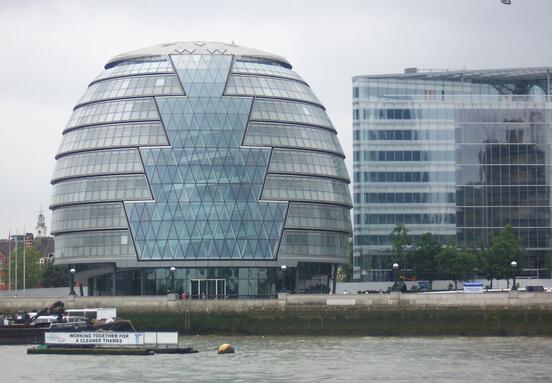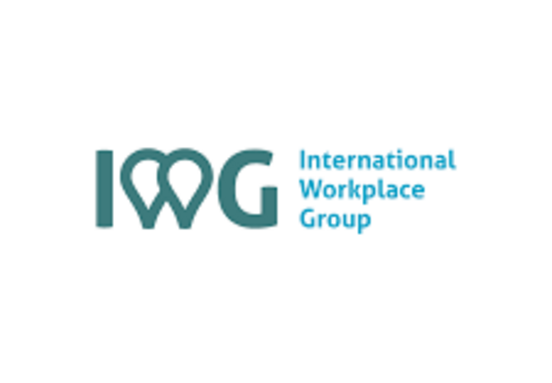In addition to an overview of the macroeconomic situation and investment trends, Colliers’ summary provided detailed insights into the retail, office, and industrial real estate markets.
Macroeconomic Environment
In his market overview, Kristóf Tóth (Associate Director, Head of Research) emphasized that Hungary’s economic growth trajectory in 2025 has so far significantly underperformed expectations (year-end growth is projected between 0.5–0.9%), although a 2–3% expansion is anticipated for 2026. The labour market remains tight, and due to slower growth, the unemployment rate may even rise (reaching 4.3% in June 2025). Wage growth has also decelerated, with a 9% nominal increase recorded in the first five months of the year.
The inflationary environment continues to pose a major challenge. In June 2025, HICP inflation stood at 4.6% in both Hungary and Slovakia, 5.8% in Romania, and between 2–3% in other countries in the region. (According to the European Central Bank’s forecast, MUICP inflation in the eurozone is expected to be 2.0% in 2025 and 1.6% in 2026.)
Changes in interest rates significantly impact credit markets. By June 2025, the main refinancing rate in the eurozone had decreased to 2.15%, resulting in more favourable conditions for euro-denominated loans. However, financing large projects in Hungarian forint is currently considered unattractive.
Industrial production volume declined by 4% in the first five months of the year, with electrical equipment manufacturing down 19.5% and transport equipment manufacturing down 2%. Although several major industrial investments are set to launch in the second half of 2025 and in 2026 (e.g., BYD, BMW, CATL), their actual scale remains uncertain. Energy prices – particularly European natural gas prices, currently around €34/MWh – continue to pose significant risks, influenced by EU sanctions, potential U.S. tariffs, and Asian LNG demand.
Construction output fell by 2.4% in the first five months of 2025, and the HUF/EUR exchange rate remains a key factor in cost developments.
A Turning Point in the Hungarian Investment Market – Beyond the Trough?
Balázs Zelles-Görgey (Director, Head of Capital Markets) presented the real estate investment market. He pointed out that the market hit rock bottom in 2024, with transaction volumes totaling only around €400 million, compared to nearly €2 billion in the pre-COVID years. However, signs of recovery are already visible in the first half of this year: including the sale of the Marriott Hotel, investment volume reached €450 million, surpassing the total for all of 2024.
He forecasts that total investment volume could reach between €700–800 million this year, effectively doubling the 2024 figure. Still, commercial real estate investors are seeking stability, and geopolitical volatility and regional uncertainties may continue to affect transactions in the remainder of the year. The expert hopes that the upward momentum will not be disrupted by the parliamentary elections scheduled for spring 2026 in Hungary. Historically, investors tend to pause and wait to see the direction of the new government during such periods.
Hungarian investors remain the most active players in the market. Many Western investors who were previously present have exited due to country-specific risks, and currently, 80% of investors are domestic. Encouragingly, there are now positive signs: for example, the sale of the Honvéd Center office building (formerly owned by WING) to Hamburg-based Greve Group at the end of 2024, and the sale of the newly developed Baker Street office building by Atenor earlier this year. Several ongoing due diligence processes also involve Western buyers who have been granted exclusivity.
A standout transaction this year, demonstrating renewed investor interest in the logistics sector, was Erste Asset Management’s acquisition of two warehouse halls totaling 84,000 sqm from HelloParks in Páty – the largest logistics deal in Hungary’s history.
In the office segment, there is clear investor demand for well-located, modern, “ESG-proof,” and nearly fully leased Grade A offices, such as the earlier H2Offices transaction. Additionally, several older office buildings are being considered for conversion into hotels or residential use – for instance, the Forestay Group, in partnership with Recorde Asset Management, acquired and is transforming the former Váci Utca Center into a hotel with over 200 rooms. At the same time, there are successful examples of modernization and renovation while retaining office functions, such as the transformation of Academia Offices (formerly Akadémia Business Center).
Zelles-Görgey expressed hope that the still-nascent “living” sector (rental housing, student accommodation, senior homes) will eventually develop into a standalone investment segment modelled after Western Europe. Early signs of this are already visible, with growing investor interest in the sector.
In the first half of 2025, the most sought-after segments in the investment market were hotels (37%), followed by office buildings (32%) and industrial properties (25%). While in the past three years, deals exceeding €20–25 million were rare, it is a positive sign that, according to market sources, the HelloParks deal was valued at around €85–90 million, the Baker Street office transaction exceeded €50 million, and the Marriott Hotel deal surpassed €110 million.
Currently, Colliers estimates prime office yields at 6.5%, prime logistics yields at 6.75%, and shopping centers and retail parks at 7%. For hotel transactions, further market activity is needed to establish a realistic yield benchmark.
For the remainder of the year, Colliers expects yield levels to remain stable, with no significant compression anticipated – even if the ECB proceeds with further rate cuts – as the growing yield gap compared to Western European markets could once again make Hungary more attractive to Western investors.
Retail Real Estate Market
In her market overview, Anita Csörgő (Director, Head of Retail) highlighted that while real wages increased by nearly 4% in the first five months of 2025, retail sales volume grew by only 2.6%. The apparel and footwear segment underperformed the average (just 1.5%), whereas health and beauty products and e-commerce were the main drivers of growth (6.5% and 5.4%, respectively).
In 2024, purchasing power reached €11,570 per capita, marking a 7% increase compared to 2023 and exceeding average inflation. However, this still lags significantly behind the EU average of nearly €20,000. Tourism provided substantial support to retail spending: in the first half of 2025, the number of international overnight stays rose by 8.4% year-on-year. For 2025, a further 3–4% increase in real and disposable income is expected, which – combined with higher foreign tourist spending – suggests continued expansion in retail turnover. However, this positive trend is tempered by persistently above-average food inflation, which dampens demand growth in other retail sectors.
The downtown “high street” retail market is becoming increasingly active, with several new brands signing leases and planning store openings for late 2025 and the first half of 2026. Demand remains concentrated around Váci Street and Fashion Street, where availability is close to zero. However, surrounding streets (Petőfi Sándor Street, Fehérhajó Street) are also experiencing rising foot traffic and leasing activity. Demand along Andrássy Avenue also picked up in the first half of 2025.
Rental rates are increasing since early 2024, premium units (100–150 sqm with good storefront visibility) on Váci Street have seen a 15% rise, currently averaging around €160/m²/month. On Andrássy Avenue, prime rents have remained stable at €55/m²/month, but due to low vacancy, upward pressure on rents is expected over the next 12 months. Unfortunately, the presence of souvenir and service-oriented shops – attracted by affordable rents and growing pedestrian traffic – has deterred luxury brands. These brands are actively seeking locations on Andrássy Avenue but only in areas surrounded by similarly high-end retailers.
Tenants are becoming increasingly proactive: many are renewing leases well before expiry, and negotiations with new tenants often begin 2–3 years ahead of current lease termination.
Retail parks continue to see strong demand, particularly from discount chains, grocery retailers, FMCG brands, and health and fitness service providers, due to more favourable rental and operating costs. In 2025, one new retail park opened (Dera Park in Szentendre), and four additional regional developments are in preparation for 2026–2028. However, permitting processes are becoming more complex, and proposed amendments to the Plaza Stop regulation are adding further uncertainty.
Shopping Centres – In Q4 2025, the 11,000 sqm Zenith Corso will open in Zugló, designed more as a neighborhood center than a traditional mall. By the end of 2025, the Corvin Palace (formerly Corvin Áruház) will host 11 dining venues, 3 pubs, and 3 cultural event spaces under the Time-Out Gastro concept, spanning 2,500 sqm plus a 600 sqm rooftop terrace.
No new large-scale developments are currently in the pipeline, except for the complete redevelopment of Duna Plaza. Scheduled to open in 2028 under the name Duna Mall, the new center will span 48,000 sqm – 40% larger than its predecessor. Duna Mall will be a more upscale, experience-focused shopping destination with a broader tenant mix, better aligned with evolving consumer and tenant expectations in the catchment area.
Additionally, ALBA Plaza is undergoing significant modernization, and Adventum has acquired 14 former Tesco hypermarket units, which will be redeveloped as Shopland Shopping Centers. These will feature smaller Tesco stores alongside more fashion, dining, and other retail tenants, contributing to the expansion of Hungary’s shopping center stock.
Office Market
Miklós Ecsődi (Director, Head of Occupier Services) emphasized that while Hungary had the lowest office vacancy rate in Europe prior to the COVID-19 pandemic, it now has the highest in the region at 12.8%, due to the large volume of new developments delivered in recent years. Approximately 700,000 sqm of new office space was added to the existing stock of around 3.7 million sqm. Although tenants began reducing and optimizing their office usage during the pandemic, net absorption still averaged around 50,000 sqm annually during this period.
The current high vacancy is primarily supply-driven. As supply pressure eases, healthier trends and gradually declining vacancy rates are expected – early signs of which are already visible in the H1 2025 data. However, a one-off spike in vacancy is anticipated in 2026 due to the relocation of government institutions.
Speculative office developments currently under construction total 106,700 sqm, scheduled for completion by Q4 2027. Forecasts indicate that 77% of new office developments will be concentrated along the Váci Corridor, primarily driven by major projects from GTC, Skanska, and Indotek. Due to shifting market trends, functional repurposing is becoming more common, with many originally planned office projects being converted for residential or hotel use.
In H1 2025, net take-up exceeded lease renewals – a trend not seen for an extended period. Overall leasing activity declined by 10.7% compared to the same period last year. Net take-up amounted to 100,900 sqm (a 4.7% decrease), accounting for 47.4% of total demand in H1 2025 – 3 percentage points higher than in H1 2024.
The Colliers expert also noted that Hungary’s office market remains heavily Budapest-centric, with Debrecen being the most significant regional player due to its intensive development and investment activity.
Industrial & Logistics Market
Following several years of dynamic expansion, the Hungarian industrial and logistics market experienced a significant shift in the first half of 2025: instead of excess demand, the market is now facing oversupply – as highlighted by Tamás Beck (Director, Head of Industrial).
The Budapest and surrounding agglomeration stock reached 3.87 million sqm, while the national total now stands at 5.84 million sqm. However, vacancy rates have risen sharply: in the capital, it increased to 13.4% (from 7.9% in 2024), and in regional markets to 10.8% (from 6.8% in 2024). The volume of new completions in H1 2025 was 111,065 sqm in Budapest and 80,588 sqm in regional areas – significantly below 2024 levels. Demand has also declined noticeably: net absorption in the capital was -103,000 sqm (compared to +233,904 sqm in the previous year), while in regional markets it reached only 30,202 sqm (down from 212,434 sqm in 2024).
The increase in vacancy is primarily driven by uncertain economic prospects, delayed investments, cautious behaviour from export-dependent tenants, and rising operational costs. In the first half of 2025, approximately 516,000 sqm of warehouse space stood vacant in Budapest (13.4%), and nearly 214,000 sqm in regional markets.
Major developers remain active (HelloParks, CTPark, VGP, Panattoni, Inpark, Innovinia), but the volume of future projects will largely depend on how demand evolves. In Western Hungary, for example, the share of new completions has remained conspicuously low. In Eastern Hungary, Kecskemét is beginning to reposition itself upward, and while Debrecen remains the most promising market after Budapest, developers have adopted a more cautious approach due to delays and uncertainties surrounding ongoing investments.
Source: Colliers








